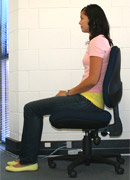Behaviour
Caring for babies
Bottle feeding
Changing a nappy
Cleaning and sterilising bottles
Daily cleaning tasks
Helping new children settle in
Preparing for a nappy change
Sleep patterns – babies
Sleep routines – babies
Toilet training
Caring for children
Allowing time for practice
Dressing/undressing
Mealtimes
Nappy change
Packing away/caring for the environment
Sleep/rest time
Toileting
Common self-help milestones
Tips for sleep and rest time
Self image
Communication
Body language
Limits and guidelines
Ways children communicate
Greeting children and families
Modelling appropriate communication
Questioning
Verbal and non–verbal communication
Acknowledging children's feelings
Listening attentively
Communicating with Aboriginal and Torres Strait Islander parents/carers
Development
Allowing time for practice
Dressing/undressing
Mealtimes
Nappy change
Packing away/caring for the environment
Sleep/rest time
Toileting
Common self-help milestones
Creative development
Language development
Modelling positive relationships
Physical development
Sharing and taking turns
Sleep patterns – babies
Sleep routines – babies
Encourage independent problem solving
Fundamental movement skills
Health, hygiene and safety
Coping with stress
Correct manual handling principles
Daily cleaning tasks
Hand washing
Hand washing poster
Manual handling overview
Toilet training
Safety checklist
Learning experiences and play
Environmentally friendly learning experiences
Learning experiences for different development areas
Creative resource materials
Arranging the environment to facilitate learning and pleasure
Indoors and outdoor areas
Creating a positive physical environment
Legal and ethical issues
Child abuse case studies
How do I recognise when a child or young person is at risk?
Tips on dealing with disclosures
Observation methods
Arranging Experiences (PDF 351Kb)
Recording observations
Rules for making observations
What you can learn from observations
Programming
Children’s interests, strengths, needs and skills
Extending the children’s interest in dinosaurs
Objective observation
Planning an OSHC environment
Behavior management plan
Planning enjoyable experiences
Planning experiences for 0 - 2 years age group
Planning experiences for 2 - 3 years age group
Planning experiences for 3 - 5 years age group
Correct manual handling principles
1. Assess the task
The safest way and the best technique for performing the task is determined by considering:
- the environment
- the ability of the handler to perform the task eg size, age, state of health
- the nature of the load - ie animate or inanimate.
When lifting or transferring a child with a disability, it is essential that there should be communication before the procedure to ensure the dignity of the child and the safety of both the child and the staff member. The mode of transfer must be discussed and the child involved in the planning and implementation of the procedure.
2. Plan
- Ensure that the area is free from obstacles, which may interfere with the smooth implementation of the procedure eg bags, other children, or tables.
- Wear comfortable clothing, which allows free movement. Shoes should have flat heels, covered toes and provide good support to the feet. Articles of jewellery, which could become entangled, should be removed. Brakes must be applied to moveable equipment.
- Ensure adequate help is available.
3. Position the feet
- Feet should be comfortably apart to provide a wide base of support and to allow the handler to get as close to the load as possible.
- Feet should be positioned in the direction of movement of the procedure so that weight can be transferred smoothly from one leg to the other. The centre of gravity should fall within the base of support to give a more stable posture.
4. Take a secure grip
Make sure that the grip is comfortable for both the child and the handler and that this is decided before commencing a procedure.
5. Keep the load close to the body
Make sure the load is brought as close as possible to the handler to minimise stress on the lumbar spine.
6. Maintain good posture throughout the procedure
The vertebral column should be in correct alignment in the normal spinal curvature. The handler should keep his/her head up and neck straight, brace abdominal muscles to support his/her spine and avoid twisting.
7. Use the leg muscles
Hips and knees must be bent to lower the centre of gravity and align the body correctly. The strong leg muscles are used to reduce the stress on the spine.
8. Use body momentum
Timing is essential so that the transfers can be performed smoothly and steadily. Both client and handler should be fully prepared and the timing agreed eg one, two, three - lift.
In team lifting, one person becomes the leader and directs the procedure.
Good posture
Good posture is fundamental to a fit and healthy body and should become a way of life. Good posture can be practised while sitting, lying, standing, walking, working and exercising. A good posture is one that puts the least possible amount of strain on your joints and muscles and takes a minimal amount of energy to maintain. A good posture also limits the wear and tear on joints and helps prevent injury, joint and muscle fatigue.

To achieve good posture, follow these guidelines.
- When standing, put equal weight on each leg and keep your back straight.
- When sitting, your hips and knees should be at right angles (90°), the natural curve of your back is maintained and you should put equal weight on each buttock.
- At work, remember to maintain a good posture when involved in meal assistance, client care and programs, pushing wheelchairs and doing up seat belts, etc. Remember that the constant bending involved in carrying out daily routines can be very stressful on your back.
- Even when sleeping, make sure you maintain a good posture as you can strain back and neck muscles while lying in bed. A supportive mattress is essential.